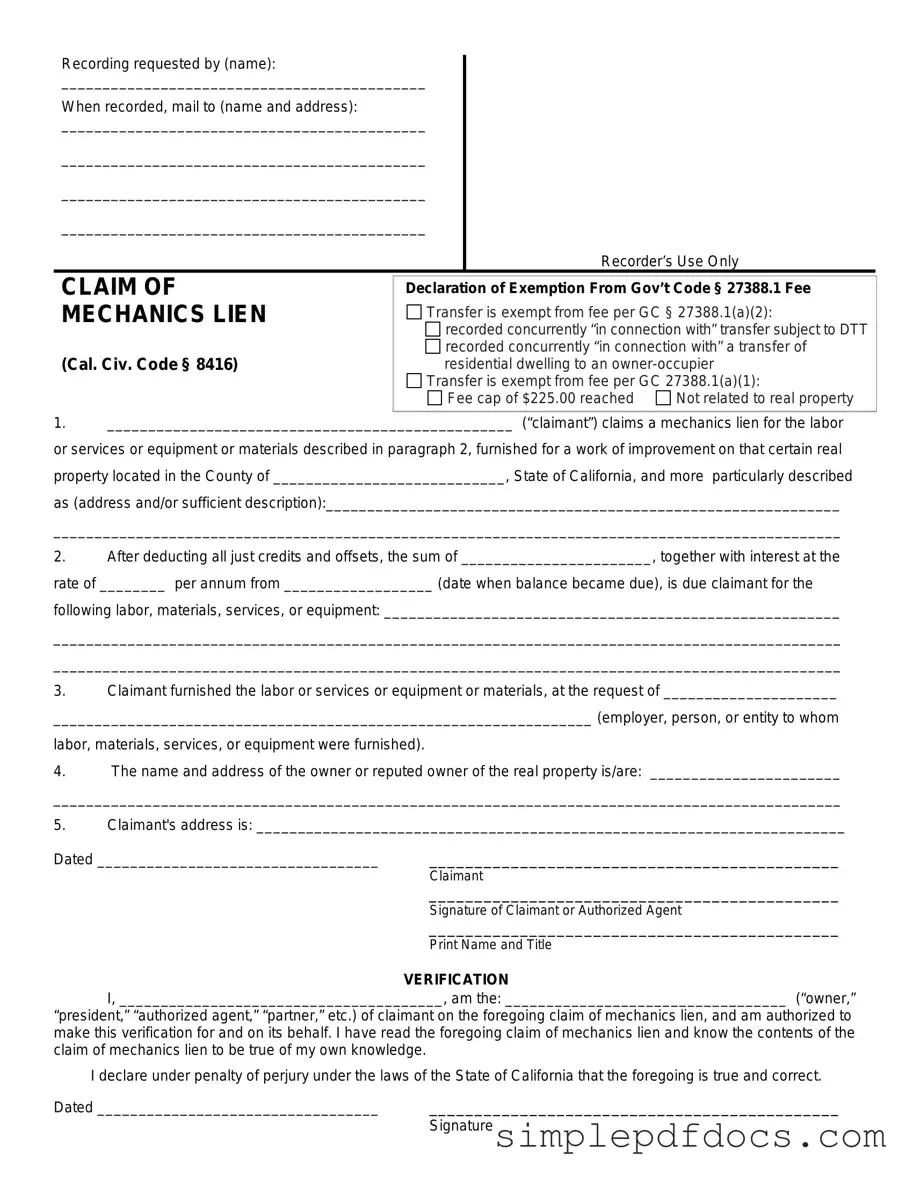Fill Your Mechanics Lien California Form
The Mechanics Lien California form is a legal document that allows contractors, subcontractors, and suppliers to claim a right to payment for work performed or materials provided on a property. This form serves as a powerful tool to ensure that those who contribute to a construction project are compensated fairly. Understanding its use and requirements is essential for anyone involved in the construction industry in California.
Get Document Here
